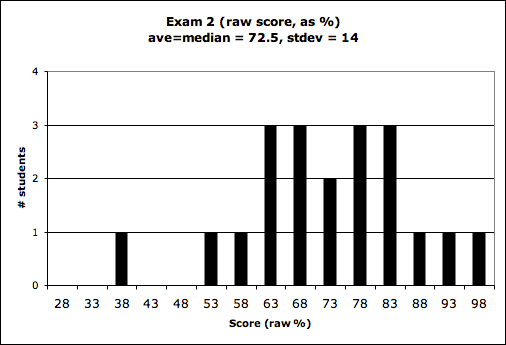

Exam information
As always - you can bring the "purple equation sheet", your plasma equation book, and at this point three sides of handwritten notes (written by you!)
The final will be cumulative - (look below to remind yourself of the material that was expected on earlier midterms.) There will also be new stuff since the last midterm, primarily magnetism. I would expect it to be roughly "half and half" . As always, anything from homeworks, reading, and lecture all term are fair game, but I try to focus on big topics for exam questions. Chapter 7 will not be on the final.
If you never noticed, the syllabus has detailed (course-level but also chapter by chapter) learning goals.
Chapter 5 : Magnetic fields
Ampere’s Law, vector potential, and Biot-Savart are the center of this chapter. Know how to find the vector potential, how to use it to find the B-field. Know about volume, surface, and line currents and current densities. There’s a triangle diagram somewhere…
Chapter 6: Magnetic fields in Matter:
Know about magnetic dipoles and magnetic moments,
especially how to add them up to yield the magnetic moment per unit volume.
Know about the B, M, and H fields, bound currents from M, and Ampere's Law for
the H-field. Know about linear magnetic materials and magnetic permiability.
Older information, for reference:
Here is the histogram from Exam 2:

Second midterm was Tuesday evening. Same basic structure as before.(see notes below)
The exam is going to center on Chapter 3 material (on electrostatic potentials in vacuum) and Chapter 4 material on static electric fields in matter. Since we have only had one homework on Chapter 4 material, I will "cut off" that material at (but including) chapter 4.4.1. So I *do* expect you to know the basics of the "D" field and linear dielectrics (the dielectric constant, and how it relates D, E, and P in a simple way).
Below, I have listed some of the high points that I think of as the core material. However, all of Chapter 3 - 4.4.1 and anything from homeworks and class are fair game!
Chapter 3: Poisson and Laplace equations:
Solving
Chapter 4: E-fields in matter.
Know about electric dipoles and how to add them up
via the polarization. In particular, you should be comfortable with the ideas
of surface and volume bound charges, finding the D-field from known (simple, symmetric) free charge
distributions, and how to relate the E-field to D and P for linear media. (i.e. know about
relative dielectric constants)
First midterm is Tuesday evening. (See below) Note the location, it is NOT our regular classroom!
If you understand and can use Griffiths triangular
diagram, Figure 2.35 on page 87, and can calculate energies of assembly, then
you are likely to do well on the exam.
Chapter 1: Here are the major topics you should now know
about:
Vector calculus ideas like div, grad, and curl.
Stokes and Gauss theorems
Dirac delta functions.
Chapter 2: Electrostatics.
All sections. You should know about all the topics
we covered in the homeworks. All the legs of Figure 2.35 should be familiar. In
addition to being able to crank the equations, you should also know about some
of the limiting cases, say for the expected electric field or voltage very far away from
an object. Also, be prepared to know how to check your work, say by taking the
divergence of an E-field to check that you get back the original charge
distribution.
Energy and capacitance problems are easy to forget
as they don’t appear on Figure 2.35, but you need those tools too. Remind
yourself about how to figure out configuration energies and capacitance.
|
|
|
|
Exam 1 |
Ch. 1, 2, and 3.1 (with the obvious main emphasis on Chapter 2) All material from lecture, text, and homeworks 1-5 is fair game. Expect a mix of quantitative (homework-style) and qualitative problems. Explaining your work (BRIEFLY but clearly) will be highly valued! |
|
Exam 2 Tu Mar 18, 7:15-9:15 PM G125 |
Up through Ch. 3 and Ch 4 (including 4.4.1, that's the cutoff for the exam) |
|
Final exam |
Little more than half on new material (Chapter 5 -Ch 6) and other half cumulative. |